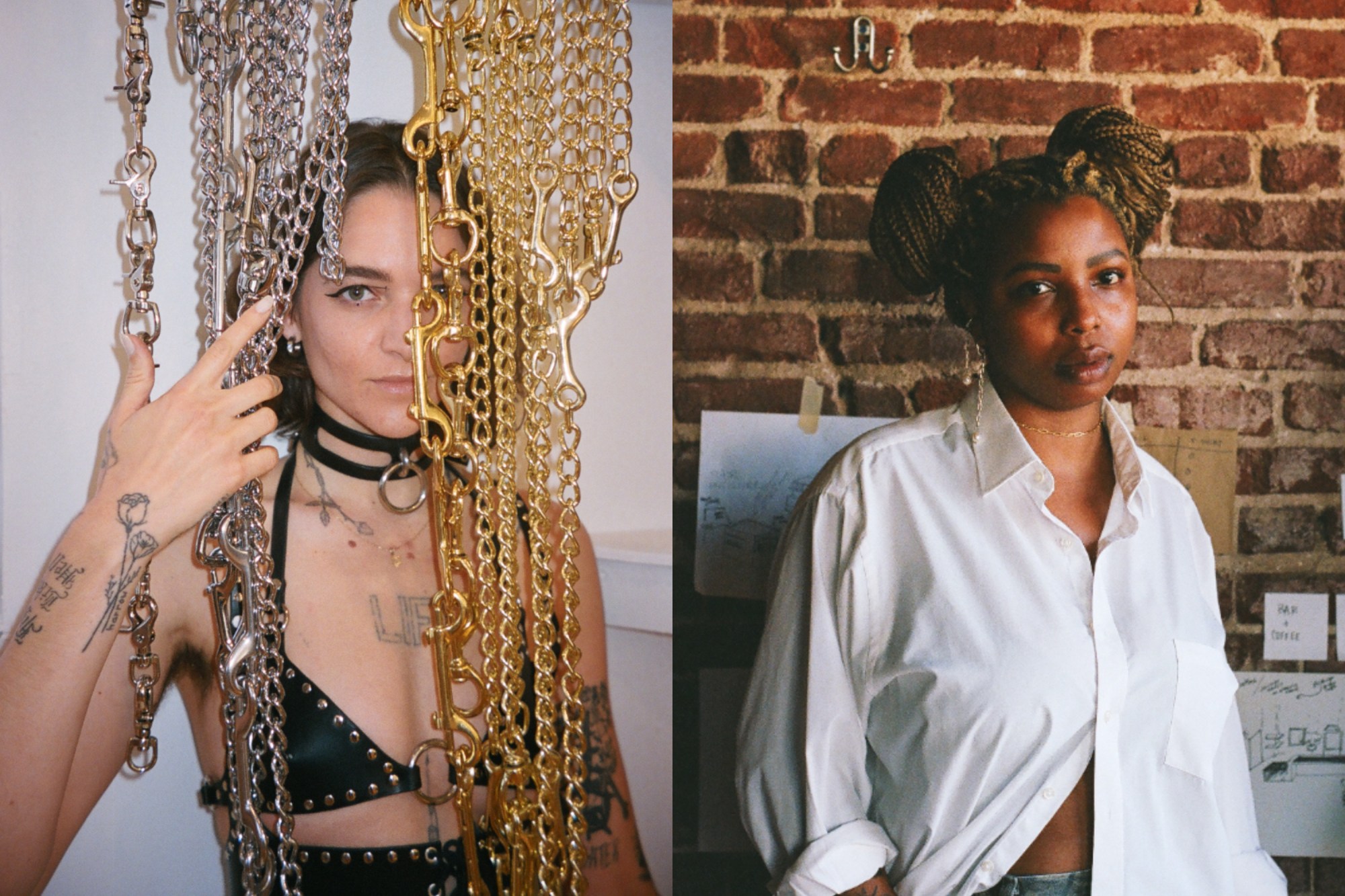This story originally appeared in United States of i-D, a series in celebration of diverse communities, scenes and subcultures across America.
The city of Asheville, North Carolina is one of the fastest gentrifying cities in America, home to bustling downtown breweries, countless developments and tourist-filled streets. Asheville has a reputation as a progressive Southern city that prides itself on a robust art scene, but the River Arts District — a made-for-tourists collection of studios, galleries and gift shops — is largely inaccessible to the artists who actually live there working service jobs to afford rent. While creatives have often sought refuge in the Blue Ridge Mountains surrounding Asheville, including the queer and hippie artists who brought new life to the city in the 80s and 90s, that rich history isn’t easy to see in its art scene today — unless you know where to look.
In West Asheville, on a street called Haywood Road, there’s a wide building with a black brick facade. The letters in the window spell out not just the name of the place, but what it represents within the city: ‘Different Wrld.’ Previously home to The Mothlight, a beloved concert venue and local meeting place that closed during the pandemic, this space has been transformed into an inclusive creative hub and culture house for artists who don’t feel seen in the River Arts District. “We are a town that was literally built for tourism, but for some reason, tons of artists flock here,” says Honey Simone, a DJ, installation artist and the founder of Different Wrld. “There’s just not enough infrastructure to support everyone, which is why there’s such a strong underground art scene.”

When Honey passed through Asheville in 2016 on a road trip with her friends, it was the underground art and music scene — the house shows, DIY events and the artists who threw them — that made her want to drop everything and move there. Ever since, Honey’s been a radical force within the community, connecting fellow creatives and advocating for a more inclusive art scene and a more just city at large. After she helped organize protests in Asheville and Western Carolina during the uprising against police brutality last summer, alongside friends and future creative partners Garnet Fisher and Roxanne Snider, someone suggested that Honey take over the old Mothlight space. From there, Different Wrld was born.
Different Wrld aims to break down the barriers of entry into Asheville’s creative industry and support the city’s artists, whether that’s by renting out camera equipment, helping artists monetize their work or just providing a welcoming place to hang out. It’s also a retail shop, a music venue, an exhibition space, a classroom, a place for panel discussions and book clubs and a safe space for queer folx, BIPOC creatives and anyone else who needs it.
Here, we meet the artists, creatives and musicians who call Asheville home to find out what makes the underground scene in their city so special.
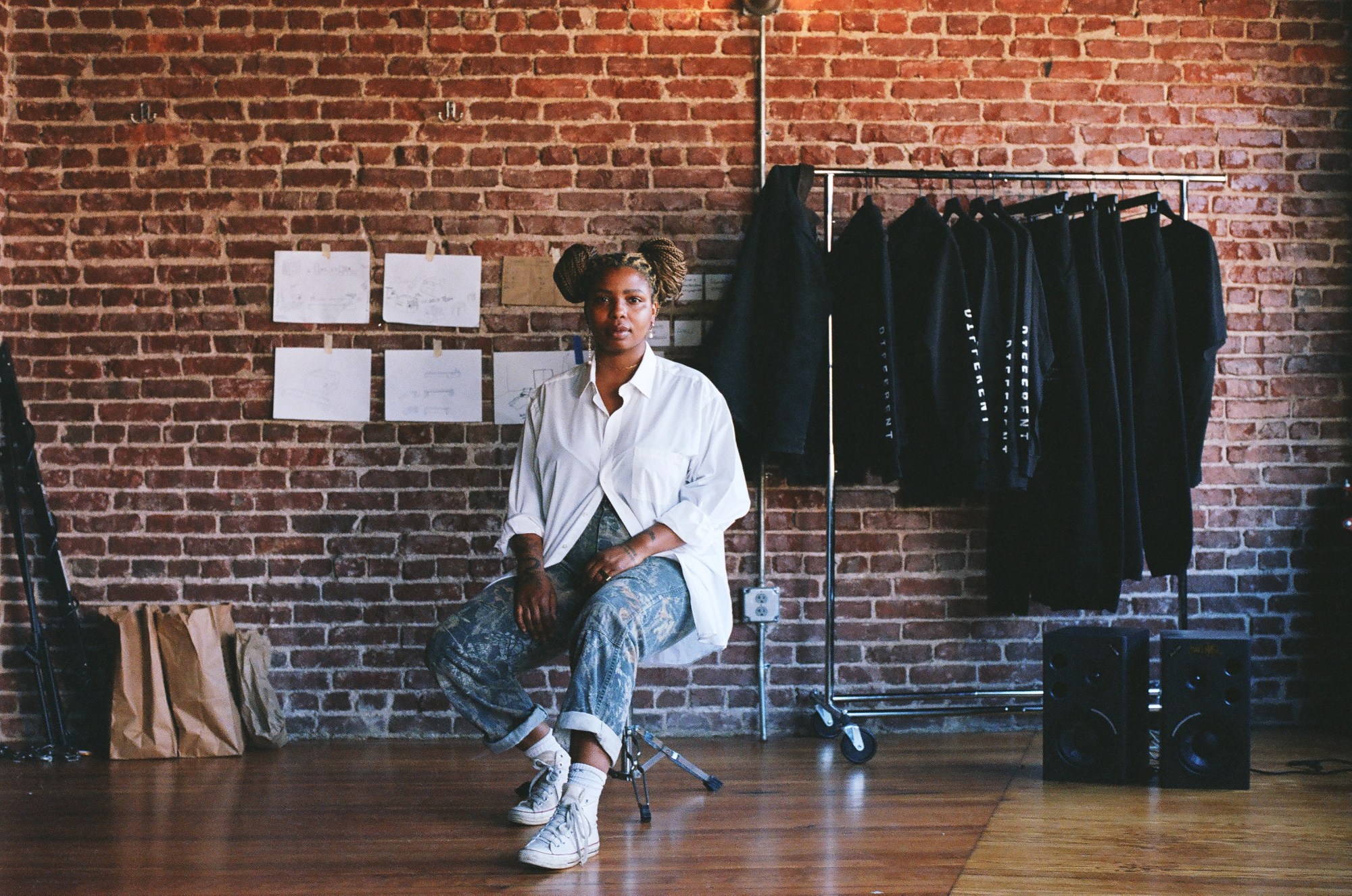
Honey Simone
Honey is a DJ, installation artist and founder of Different Wrld. Her revolutionary culture house/creative hub is set to open later this year.
What was your relationship with art like growing up? How has that evolved in recent years?
As a kid, the word artist pretty much just meant being good at painting or drawing… but now I know art is any way of expressing yourself creatively.
How did you end up in Asheville, and what do you like most about it?
First, I want to honor that we are on ᏣᎳᎫᏪᏘᏱ Cherokee land. This is important to acknowledge and I am grateful for all the blessings this land has held for me. I ended up in Asheville by chance after deciding to stay on my way through on a road trip. I grew up around here, so I was familiar with the area and it felt like coming home. My friends here keep me grounded and feeling loved.
How would you describe the art/music scene that you’re a part of there?
A lot of creative folks flock here, but defining our “art scene” really depends on who you are talking to. The art scene I know is layered and diverse in mediums. Being able to be around other like-minded people has really helped me develop as a person and artist, so I am super thankful for that.
What makes your creative community so special, or unique to the city?
Asheville is a tourist trap and scaling up in a way that can make it hard to make basic ends meet. So I really appreciate seeing what people create here, knowing that they probably created it after a 40-hour week in the service industry. I think there are a lot of things that are needed for an art scene to thrive and Asheville for sure has some kinks to work through. I think even amongst these obstacles, we still create and work together to keep each other afloat in whatever way is needed.
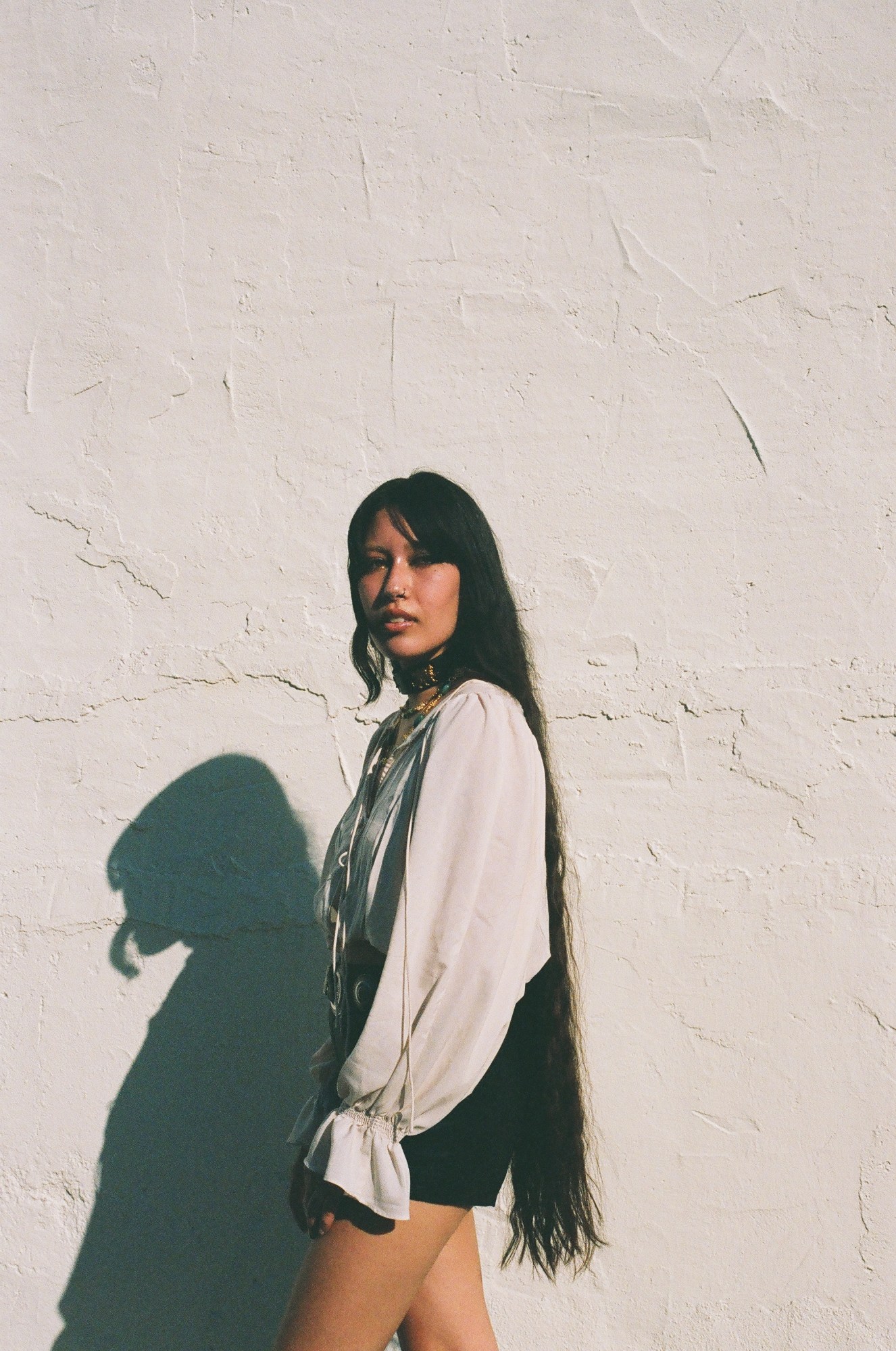
Mirai Thorbjornsen
Mirai is a visual artist primarily interested in drawing, painting and tattooing. Over the past few years, they’ve also started making jewelry.
What was your relationship with art like growing up? How has that evolved in recent years?
As soon as I was able to use a pencil, I started drawing. My mom has a sketchbook from when my sister and I were toddlers and it’s filled with colored pencil drawings of our imaginary friends and family. In recent years, my relationship with art has been realizing that it is a feasible pursuit.
How did you end up in Asheville, and what do you like most about it?
I moved to Asheville in 2016 as an undergrad. I decided on University of North Carolina Asheville solely because I love the mountains. As a Southern queer, I need to be surrounded by nature but also need to live in a city, so Asheville is just right for me.
How would you describe the art/music scene that you’re a part of there?
I think the music scene here is much more visible, as in you don’t have to be a musician or friends with a musician to experience it. There’s a range of venues from The Orange Peel to the former Mothlight to any local punk house. The art scene is definitely growing, but it feels like there’s such a deep divide between the larger art scene which is older, whiter and plays into the artsy Asheville tourism image and the underground art scene. So I’m really grateful that Honey and the Different Wrld crew are building a community for us, one that’s more accessible and inclusive.
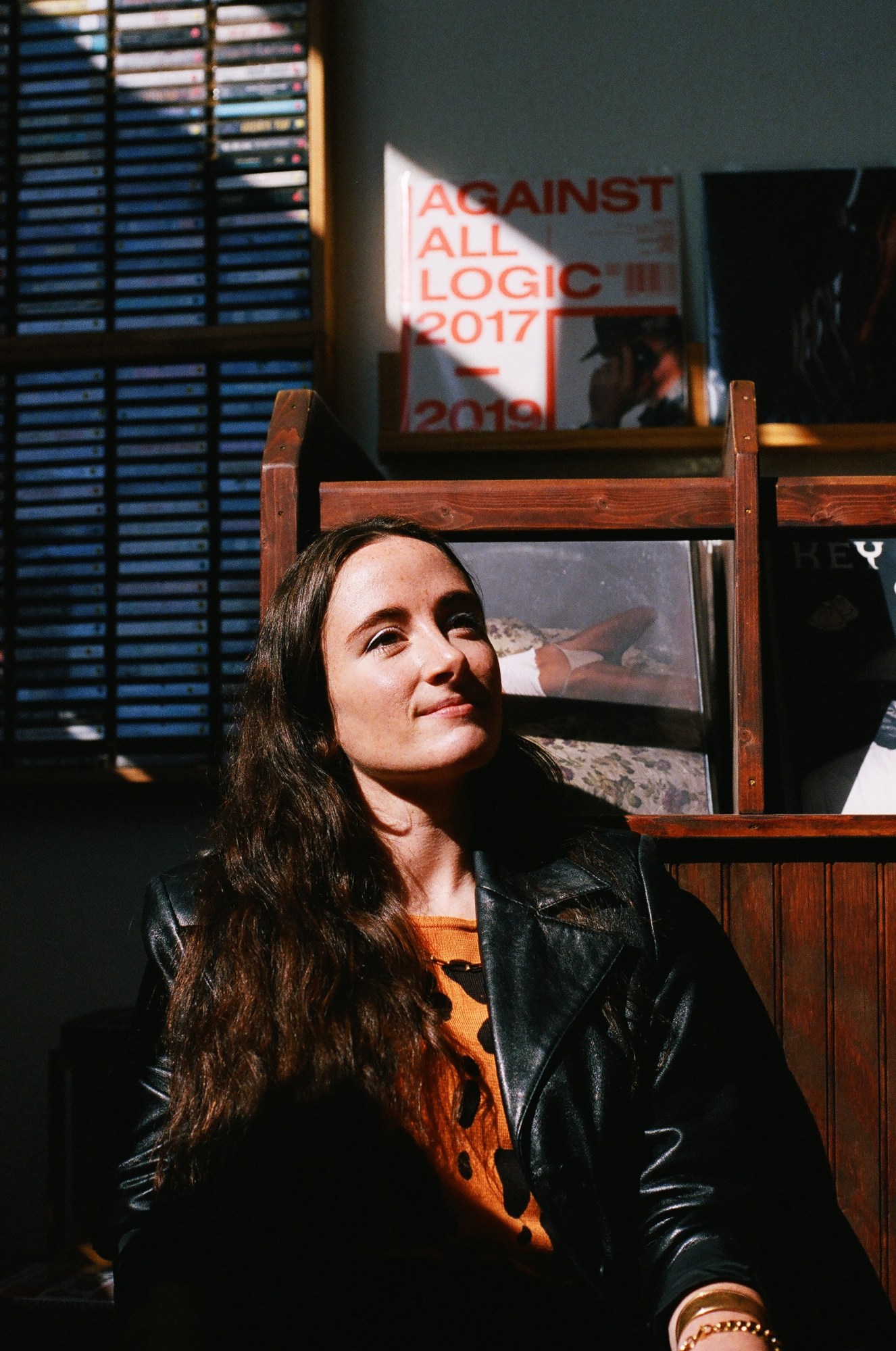
Annelise Kopp
Annelise is a marketing manager at Harvest Records, and a digital director at JAWBREAKING, a Black-owned store, media company, and creative agency. She’s also a DJ, known as DJ Meow Meow, and loves to curate playlists and plan events.
How did you end up in Asheville, and what do you like most about it?
I grew up in Asheville and got to spend the formative years of my life in this city. I have such fond memories of enjoying nearby swimming holes and hikes, seeing punk shows in dirty basements, dancing at warehouse parties, sledding on the Grove Park Inn golf course, going to see plays in the park, sneaking drinks into the Montford Cemetery, strolling through our local book stores and picking up zines at coffee shops.
When we moved here about 17.6% of the population was Black and that number dropped by 10.83% percent by 2018. All of the new developments and economic growth in this city have come at a cost. My love for Asheville runs deep, [but] I have been repeatedly let down by the disconnect between the progressive image that Asheville purports and what’s actually going on in this city (like the national coverage we received about reparations that still haven’t happened).
How would you describe the art/music scene that you’re a part of there?
Before the pandemic hit, I was DJing three nights a week at local bars and one of my favorite weekly events was Booty Tuesday, a late-night dance party that mostly brought out locals and service industry folks. Every other week, the dance party featured a drag show, “C U Next Tuesday”, hosted by Priscilla Chambers. Getting to work with such dedicated, inventive, and inspiring performers really made these nights special. I can sum up the vibe [of the DJ community] by the ways we show up for each others’ technical needs. I remember Greg Cartwright lending me his needles for a night before I had any. I feel like I could count on so many DJs in this town to do that for someone else in a pinch.
Working at Harvest Records has given me a different perspective on the music scene here in Asheville since we have a cross-section of old heads, young folks getting into music, visitors to the area, people who are community staples and more who come through our doors. In relatively little time, this shop has become so much more than a job, but rather an extension of my curatorial work, community goals, and passion for connecting people to music that will move them.
In what ways is it a safe space, or more inclusive than the Asheville art scene at large?
Asheville has been known as an arts city for a long time, but also has a long history of rendering life largely unlivable for marginalized people. We’re known as a destination arts and beer city, but with this prestige comes a pattern of hiding what might be upsetting or uncomfortable for tourists: poor public housing, chronic homelessness, and the widening wealth gap, to name a few. The arts scene to which tourists are funneled might look like fancy galleries, gift shops, etc. The communities I’m a part of are built in response to these spaces not speaking to us, being for us, or platforming intersectional artists. There are new communities making an organized effort to carve out spaces for inclusivity and safety with a touch of mutual aid, and that’s a real bright spot in Asheville.
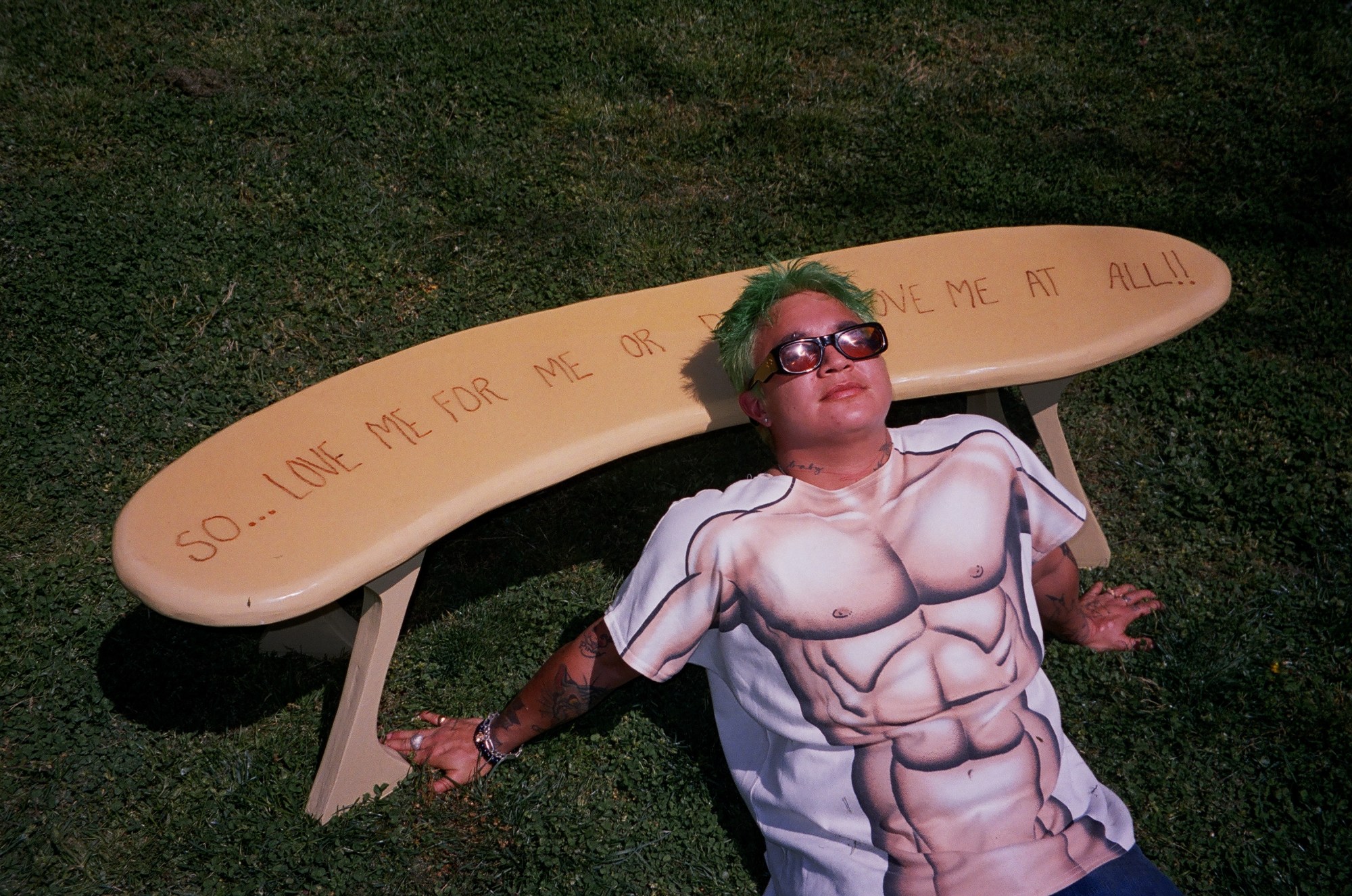
Silver Leon Cousler
Silver is a chef who’s opening their first restaurant, Neng Jr.’s, within the Different Wrld space. It will be the first Filipinx restaurant in Asheville.
What was your relationship with art like growing up? How has that evolved in recent years?
I didn’t feel very much like an artist growing up. My sister was the artist and I was the brains, but looking back [it’s] always been there. My first love was playing percussion. I was really passionate about music. Discovering the purpose of my artistry through food has widened my perspective and interests.
How did you end up in Asheville, and what do you like most about it?
I ended up in Asheville after moving from Portland over 10 years ago. I never thought I would move back to North Carolina, but it happened and I am so glad it did. This place has the most intense healing powers, a hard cold winter [and] prominent seasons that encapsulate life’s journey every year. Not to be a hippie, but it can be a spiritual place if you let it.
What makes your creative community so special, or unique to the city?
We really believe in ourselves. It truly feels like us pushing against the white infrastructure here that is really failing. At one point I truly thought I would be out of here, but I realized how important it is to create the thing it lacks. Language and how we see one another are evolving so much. The ways we support and carry each other are going to change the world, and that momentum is our unsaid baseline.
In what ways is it a safe space, or more inclusive than the Asheville art scene at large?
Some of us don’t know one another that well, but we all go out of our way to lift each other up. I recently was having a really hard day with my transness, and in that, everyone showed up for me in this way I couldn’t have predicted. I felt deeply seen by my community on a day that didn’t add up for me. That is safety.

Jaze Uries
Jaze is a singer and producer, who’s been making music since he was young. He’s also a photographer when the mood strikes.
What was your relationship with art like growing up? How has that evolved in recent years?
I have always loved being creative. I grew up in a musical household: my mom sang a lot and was a choir director, so she was extra hard on me as a musician. When I was younger, I practiced by playing along to CD’s that spanned so many different genres. I listened to music like some people looked at paintings. I was (and still am) fascinated by all of the colors and just wanted to contribute to art that hits like that.
How would you describe the art/music scene that you’re a part of in Asheville?
The scene here is really alive and tight-knit. Everyone knows everyone and if you’re considered top-notch, then you are playing consistently and with some of the best. There are players from every genre and some are national touring/recording artists that have chosen Asheville as their home base.
What’s the most exciting thing happening in Asheville right now?
One of the staples in the music community was The Mothlight. I have had some incredible experiences there. I performed there. Danced there. Fell in and out of love there. It’s a dope spot with an unmatchable vibe. When I heard they were closing I was so bummed, but then I ran into my homie, Honey, one day, and she dropped the bomb that she was taking over and I just felt all this pride erupt. The Black voice in Asheville is interesting, to say the least. So when I learned that the space was changing hands and she was going to set up Different Wrld’s headquarters there, I knew Asheville was about to get rocked.
What are you working on now?
I am currently in the process of working on my debut solo EP that I plan to release this summer!

Hunter Savoy Jaffe
Hunter is an artist and designer behind Naassene, a bespoke leatherware and hardware label. Their designs are meant to adorn, empower and mold to the body, evolving with it over time.
How did you end up in Asheville, and what do you like most about it?
I have a really interesting lineage going back to the turn of the century within Western North Carolina and Eastern Tennessee. I’m a descendant of folks who founded a moonshine town that existed outside of both NC and TN jurisdiction at the time. It’s a ghost town now, having died down after prohibition ended. This lineage, alongside my experience growing up in the Smoky Mountains, led me back to the Blue Ridge Mountains in search of a place to heal.
Prior to Asheville, I was living in the Bay Area when our community experienced a tragedy. Ghost Ship, an immersive free form space where the freaks gathered to hold each other in dance, sound, expression, and love burned [down], along with nearly all who were inside. Among them were Ara Jo, Cash Askew and my beloved Joey Casio. It is in grieving them that I drove across the country and, without planning on it much, began to live in the mountains outside of Asheville. I needed distance and solitude.
How would you describe the art/music scene that you’re a part of there?
Self-sustained. The city itself has its economic foundation in tourism, an inherently extractive basis for circulating capital. This tourist economy builds a veiled existence on top of the local economy and utilizes its own interests for self-satisfaction. This looks like a fetishization of traditional mountain practices and folk art, a buying up of land in the mountain ranges of Cherokee for the sake of secondary homes, and a workforce that mostly exists as the service industry. The underground art and music scene that divorces itself from the desires of the tourist economy only exists because of the commitment of artists and musicians to their practice.
What makes your creative community so special, or unique to the city?
The creative community in Asheville is interdependent. There’s a beauty in existing collectively with our defined practices and learning how our skills can be shared. Asheville is not as creatively resourced as larger cities like NYC, LA, SF, or MIA — so when we’re in need, our first look is to our community. Within Asheville, there seems to be a desire to connect — not just creatively — but authentically as humans.
In what ways is it a safe space, or more inclusive than the Asheville art scene at large?
The creative scene that I am part of in Asheville demands inclusivity and knows what it means when it uses that word. In this, it inherently demands systems of capitalism, heteropatriarchy, homophobia, transphobia, xenophobia, ableism, antisemitism and white supremacy be dismantled.
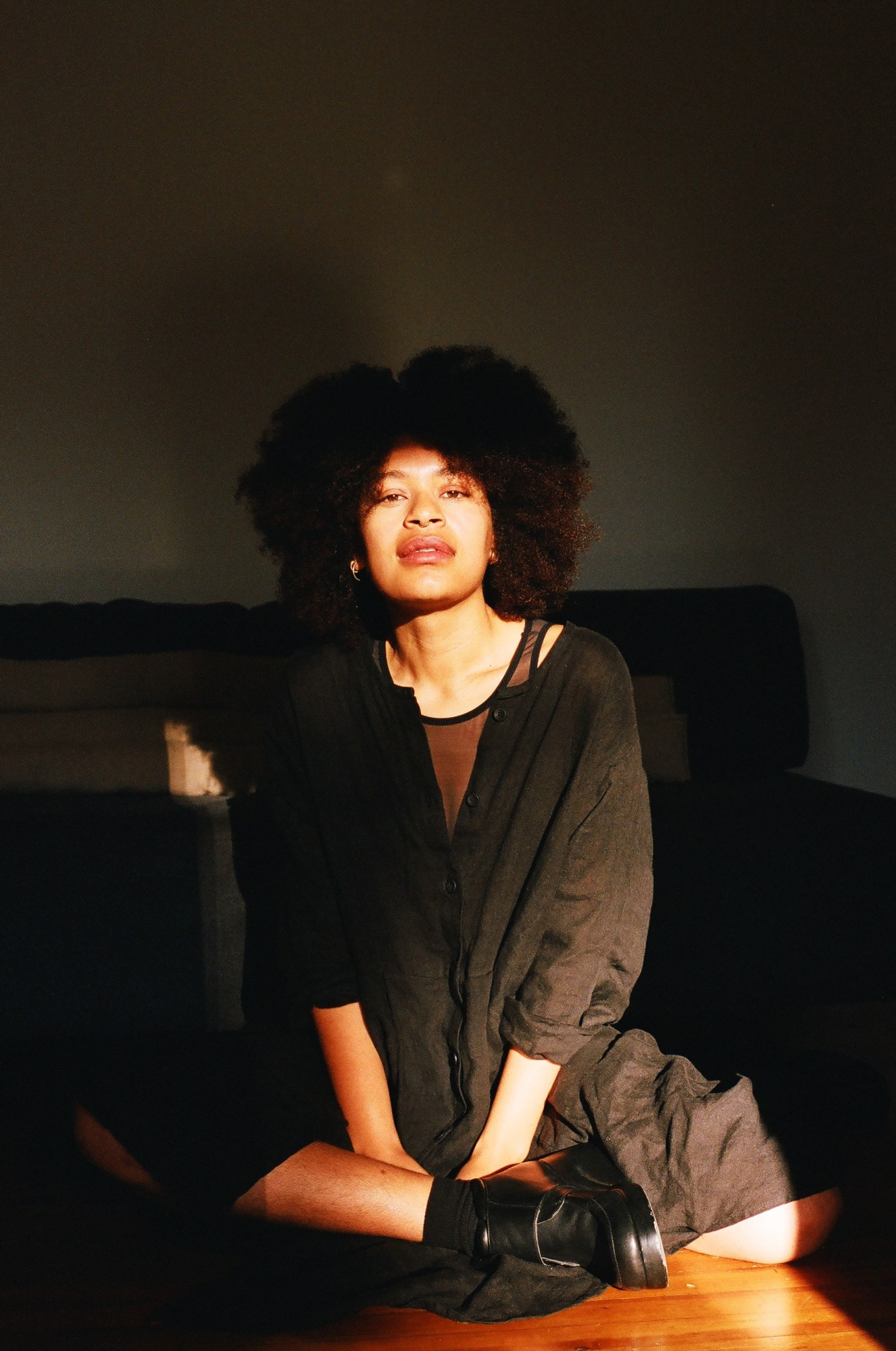
Coco Villa
Coco is a self-described self-portrait photographer who works with a number of mediums that exist harmoniously in front of the camera with her. She’s a fashion designer and a dancer too.
What was your relationship with art like growing up? How has that evolved in recent years?
There is so much creativity in my family. Most are beautiful dancers, instrumentalists, writers or skilled craftsmen, but none of them see themselves as artists. My family did not acknowledge creating as an art form, and to make it your career was seen as self-indulgent and frivolous. My mother on the other hand was very supportive even without fully understanding what I was making. She saw I was always passionate about something from such a young age. My relationship with art hasn’t changed much since I was a child. I danced all of the time. I dressed up in my mother and grandmother’s clothing, shoes and jewelry. I loved taking photos of myself, friends and family with a disposable camera. This is exactly what I am doing today in pursuit of play and pleasure.
What makes your creative community so special, or unique to the city?
I grew up moving almost every other year between New York and Miami, so I think that has created a rhythm in me. I’m accustomed to building new connections and carrying them with me to the next place. When I moved to Asheville, there was a sense of community over competition, which I found to be beautiful and uncommon in most places I had lived.
What’s inspiring you right now?
My daily movement practice is providing me with a lot of stimulation and information. Dancing alone in silence is a cathartic internal experience seemingly too great to exist in a tangible manner. I think that’s why I try to recreate these intimate experiences for the camera, or at least a version of it. A lot of the shapes and forms that come out of these movement sessions are a large source of inspiration.
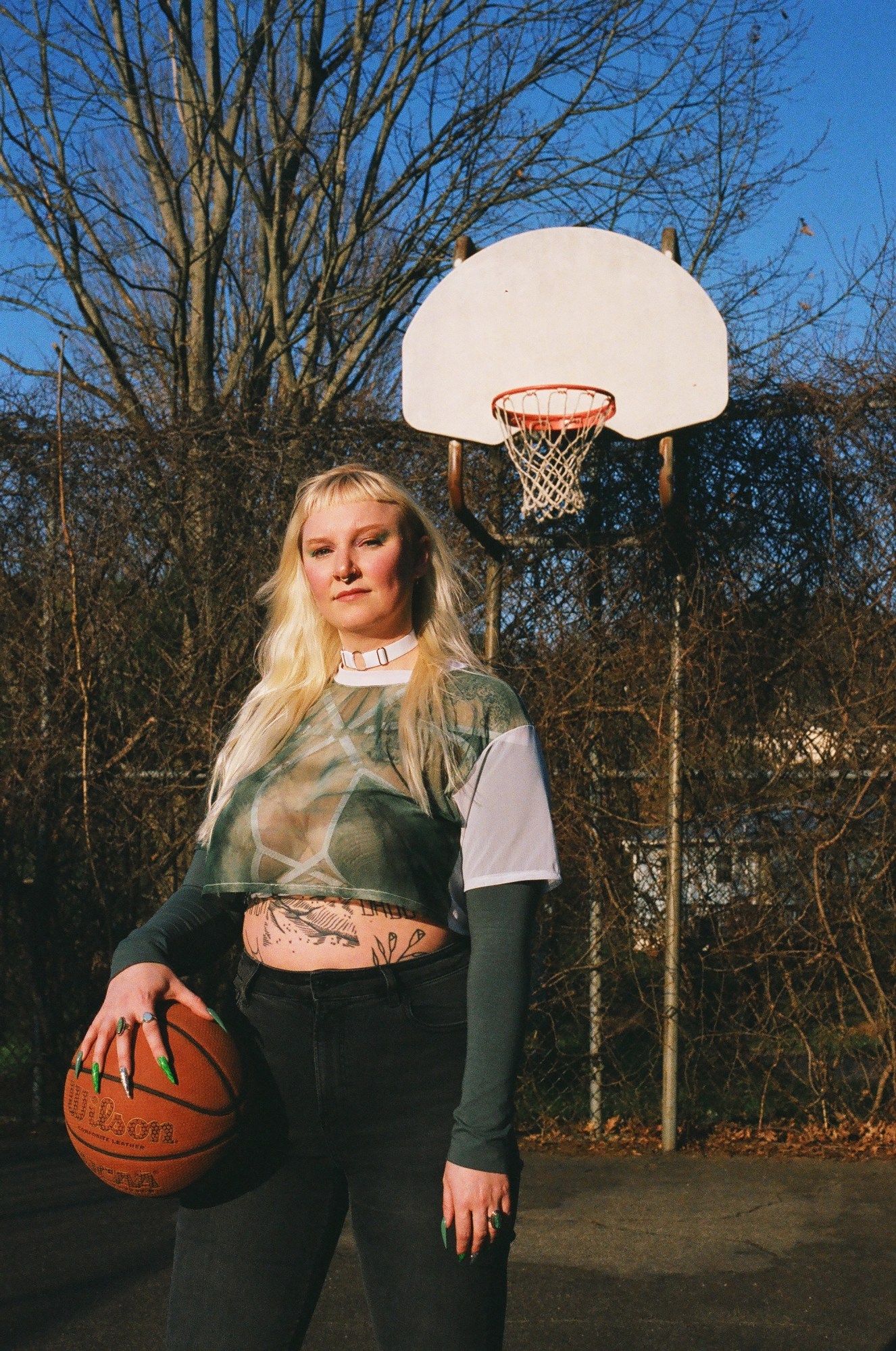

AE Silver and Patrice Audette
AE is the founder of WildFire, a small batch lingerie brand that’s also a multidisciplinary art practice spanning design, pattern cutting, photography, and styling. Patrice is a model who began working with AE at WildFire last year.
What was your relationship with art like growing up? How has that evolved in recent years?
AE: Growing up, my family heavily emphasized athletics and competition. Especially growing up as a twin, where everyday life was at once a competition with my twin while simultaneously being seen as two halves, rather than two whole people. Art was always a way to separate myself from the idea that I was just half of someone and to separate myself from competition. I wasn’t around other artists in an intimate way, so I never felt like anything I created would be compared to someone else. In recent years, it has become all-encompassing of not only my time, but also my identity. There is nothing more important to my survival than what I create.
Patrice: I have loved all things fashion and beauty since I was a child, stealing my older sister’s makeup. I began modeling when I was 18, and worked with many local designers and artists over the years. I always felt my best when I was modeling lingerie, and especially loved working with AE. Last year, when I saw that she was looking for an apprentice, it felt like a perfect fit for me.
How did you end up in Asheville, and what do you like most about it?
It’s hard to believe because of how rare it is, but both myself and Patrice are from here and our families have been here for generations! The best part of living here has to be the nature that surrounds the city.
How would you describe the art/music scene that you’re a part of there?
Queer AF! There are so many queer artists here and we feel lucky to be part of such an enriching, comfortably queer scene. Since neither of us has been super out to our families it feels so nice for that to just be a normal and accepted part of our identities.
What’s the most exciting thing happening in Asheville right now?
The most exciting things happening in Asheville right now are the social justice movements. Young people have been mobilizing to hold our city government accountable, in ways we haven’t witnessed as much in the past. Asheville is a very white liberal city, which of course means the government is doing a lot of talking about real change and not implementing any of those ideas. But we aren’t going to let up and it’s exciting because radical change feels bigger and closer than it has in the past here.

Autumn
Autumn is an artist, currently studying painting at Savannah College of Art and Design (SCAD) Atlanta. When the pandemic hit, she moved back to Asheville where she grew up.
What was your relationship with art like growing up? How has that evolved in recent years?
I was that kid who drew a lot. I liked creating. Teachers would tell me that art wasn’t a real career, and for the longest time, I listened. High school is where [the presence of] art grew in my life, along with my confidence and ability. I have my high school art teacher to thank for that. Under her guidance, I took advanced art classes with my friends. I didn’t even know [art schools] existed until her class. I started SCAD in 2017, and that’s where I developed my painting skills further. I learned if I worked my ass off, I could make it happen for myself.
How did you end up in Asheville, and what do you like most about it?
I moved here when I was seven. Left at 17 for SCAD Atlanta. In my junior year, Covid hit, and I came back home. Like everyone else, I started virtual learning, but my work outgrew my home. While looking for my studio, I was able to see how much the art scene had grown since I left. The thing I love the most about Asheville is that my studio walking distance from all my favorite galleries. So, when I need inspiration there I am.
What’s inspiring you right now?
My work is the combination of my love of red and how it just seems to wrap around my pieces and take on their meaning. Along with a love for beautiful moments in cinema, creating a version of cinema stills that takes on the weight of unspoken conversations. Like a foreign film to my audience, I give them subtitles. This theme of mental health has eased into my work, expanding further to self-love and self-worth. This way of creating has affected my way of seeing.
Follow i-D on Instagram and TikTok for more culture. Tune into United States of i-D here.
Credits
Photography Eat Humans.
Production Different Wrld
